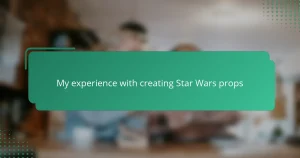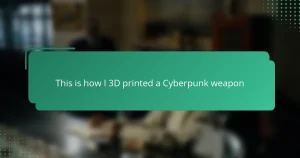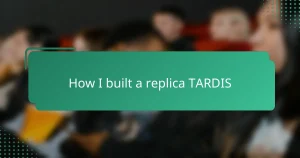Key takeaways
- Science fiction props are essential in storytelling, blending creativity and technical detail to captivate audiences.
- Choosing the right materials, such as oil-based clay and armature wire, is crucial for creating durable and detailed props.
- A well-structured planning process helps manage complex projects and maintains focus on overall goals.
- Finishing touches and effective display greatly enhance the impact of a prop, transforming it from a mere model to a storytelling centerpiece.
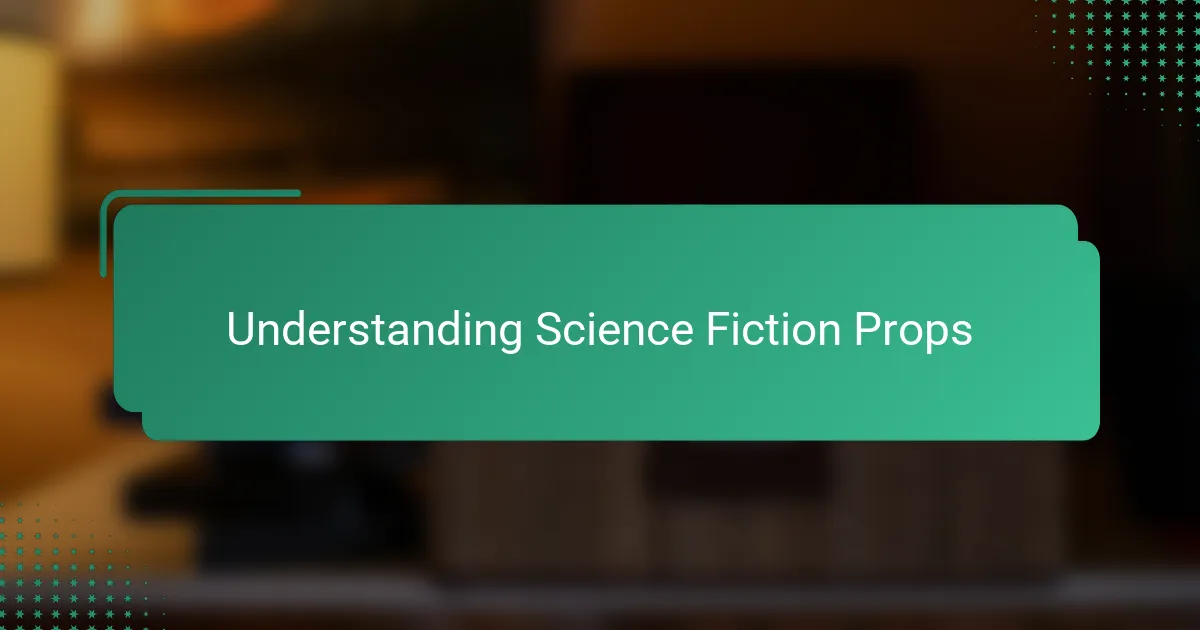
Understanding Science Fiction Props
Science fiction props are more than just objects; they are gateways to imaginary worlds. When I first held a model laser gun, it felt like I had a piece of the future in my hands, sparking a mix of excitement and responsibility to make it believable.
Have you ever wondered what makes a prop truly sci-fi? For me, it’s the combination of creativity and technical detail that blurs the line between fantasy and reality. That balance is what gives a prop its power to captivate an audience.
Working with these props taught me that they don’t just support storytelling—they shape it. Each scar, texture, and design choice carries meaning, inviting viewers to believe in the impossible. That’s the magic I strive to capture every time I sculpt.
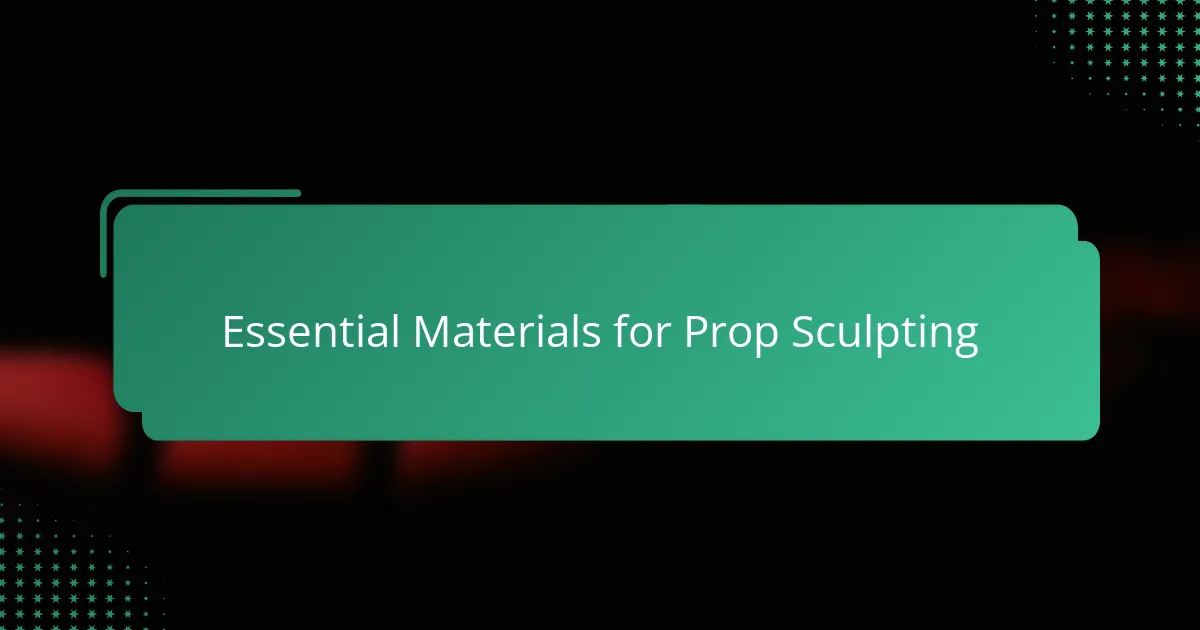
Essential Materials for Prop Sculpting
When I started sculpting my Godzilla prop, the first thing I realized was how crucial the choice of clay was. I went with an oil-based clay because it doesn’t dry out quickly, which gave me the freedom to work on details for hours without the stress of cracking or crumbling. Have you ever tried shaping something delicate only to see it fall apart? That frustration was completely avoided thanks to this material.
Beyond clay, armature wire became my unsung hero. Building a sturdy skeleton beneath the sculpt was essential to support Godzilla’s massive form, and the flexibility of the wire made adjusting poses effortless. I remember tweaking his tail’s curve so many times; without a reliable armature, that would have been nearly impossible.
Lastly, I can’t skip mentioning sculpting tools—they might seem simple but each one shapes the final texture. From fine-tipped instruments that carved tiny scales to broader tools that smoothed muscles, these were extensions of my hands. Experimenting with different tools felt like unlocking new ways to bring Godzilla’s fierce personality to life. Have you found that a specific tool completely transforms your creative process? For me, that discovery made all the difference.

Tools Needed for Prop Creation
Choosing the right tools was a game-changer for me. I started with basic sculpting knives and dental picks—simple, precise, and surprisingly versatile. Have you ever noticed how a tiny tool can unlock intricate details? For Godzilla’s scales, those fine instruments made all the difference.
Then there was the hobby rotary tool, which added a whole new level of efficiency. Sanding and carving became much smoother and faster. Using it felt like having a secret weapon in my workshop, especially when shaping the rough texture of Godzilla’s skin.
Of course, no sculpting session was complete without good lighting and a sturdy work surface. I can’t stress enough how much a clutter-free space and bright light help in catching every curve and shadow. It’s these subtle tools that, in my experience, truly elevate the whole process.
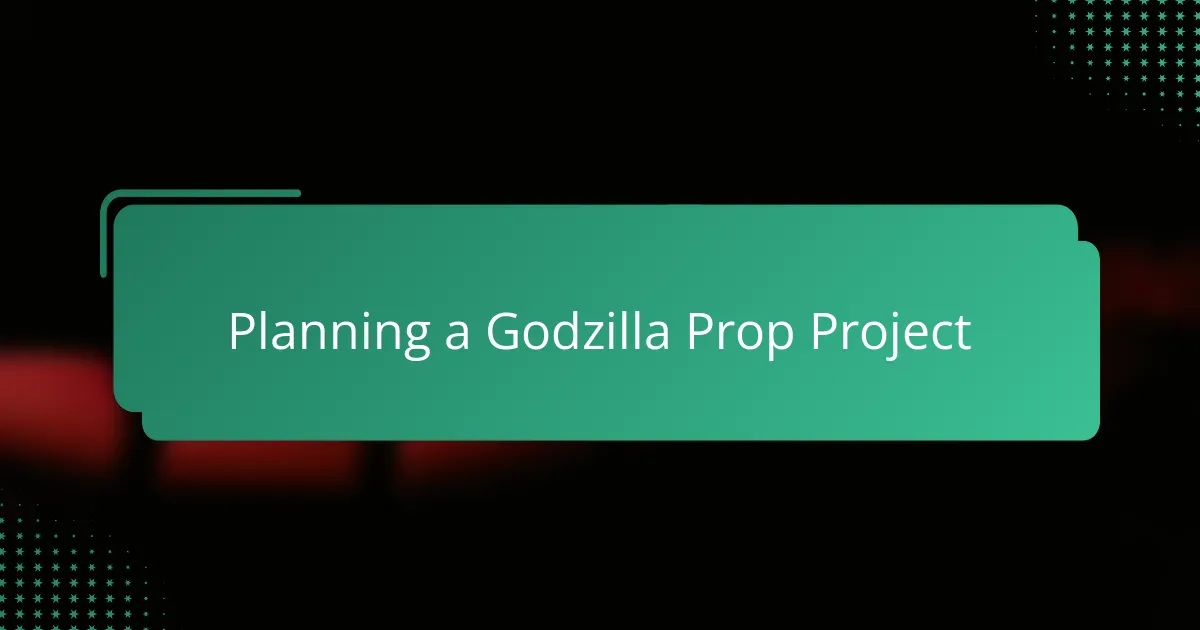
Planning a Godzilla Prop Project
Planning a Godzilla prop project felt like mapping out an epic journey before the first clay touched the armature. I found myself sketching endlessly, trying to capture not just Godzilla’s terrifying stance but the essence of his character—an ancient, unstoppable force. Have you ever noticed how a solid plan can turn a daunting project into an exciting adventure? That’s exactly what happened for me.
One thing I quickly learned was the importance of setting realistic goals for each phase—blocking out the rough shape first, then layering in muscles and textures. Without that structure, I worried I’d get lost in the details and lose sight of the big picture. Does breaking down a massive project into bite-sized steps make it easier to stay motivated? I’m convinced it does.
I also considered scale carefully because Godzilla’s towering presence can easily get lost if the proportions are off. Deciding on the final size early saved me from setbacks later, especially when selecting materials that could support the build. That planning stage might seem tedious, but in my experience, it’s what turns a good prop into a standout piece.
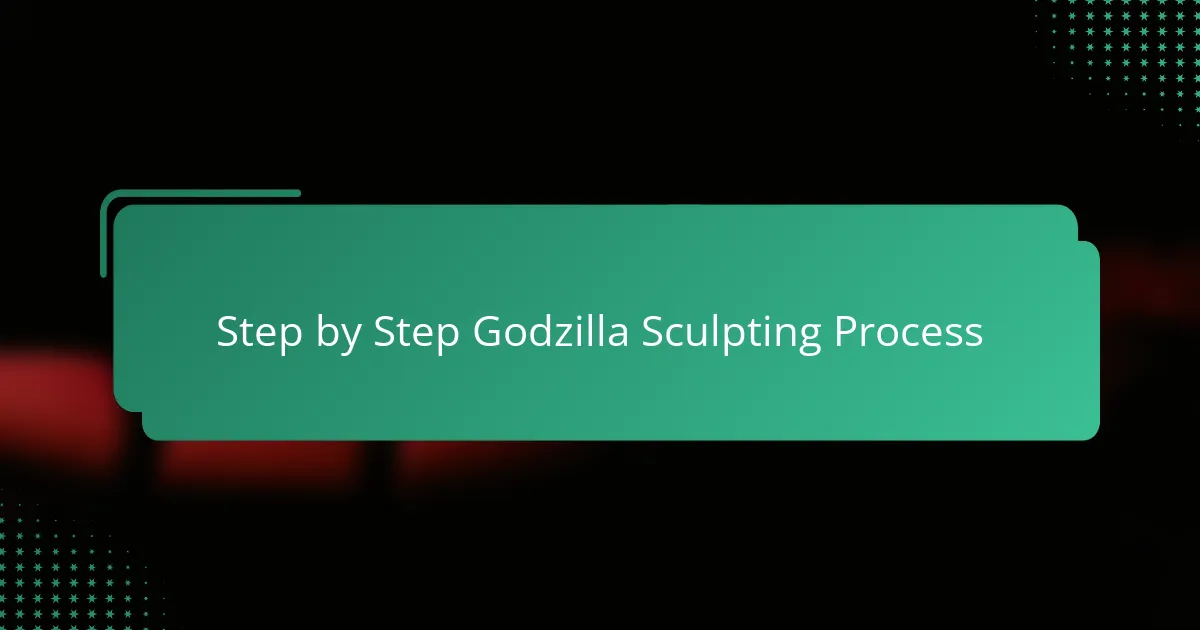
Step by Step Godzilla Sculpting Process
Starting the sculpting process, I began by blocking out Godzilla’s basic shape on the armature, focusing on proportions rather than details. I found that this rough foundation was like sketching with clay—it gave me a framework to build upon without getting overwhelmed. Have you ever felt the relief of seeing a complex idea take form piece by piece? That moment fueled my excitement to keep going.
Next came layering the muscles and bulky features that give Godzilla his monstrous presence. I paid close attention to anatomy, even though I was working on a fictional creature, because grounding fantasy in believable structure makes all the difference. When carving those bulky limbs, I realized how patience with layering textures brought him closer to life than I initially imagined.
Finally, the detailing phase was where I really felt connected to the project. Adding thousands of tiny scales and jagged ridges took hours, but each mark felt like breathing personality into the prop. I asked myself, what would Godzilla’s skin feel like if it could tell a story? That mindset transformed tedious work into an act of storytelling—and that’s the magic every sci-fi propmaker seeks.
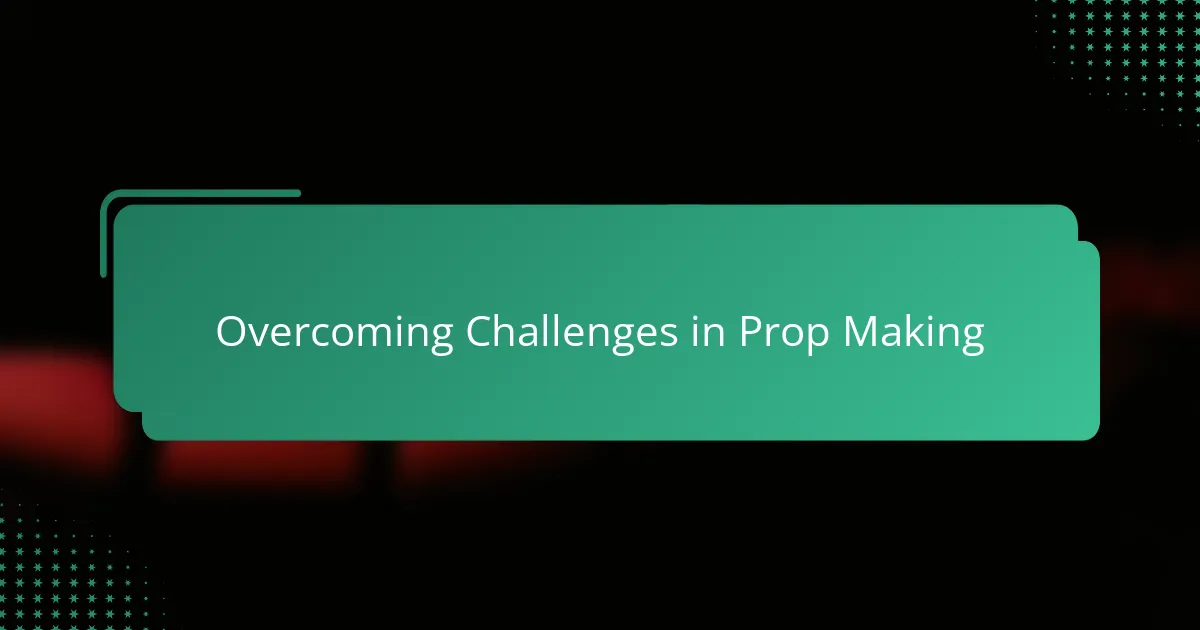
Overcoming Challenges in Prop Making
One of the toughest challenges I faced was balancing detail with durability. Have you ever spent hours perfecting a delicate part, only to accidentally snap it? That fear was always in the back of my mind, pushing me to reinforce weak points without sacrificing the fine textures I was so proud of.
Dealing with unexpected setbacks was another lesson in patience. At one point, a small crack appeared in the sculpt just as I was finishing a critical area. Rather than letting frustration take over, I learned to treat mistakes as part of the creative process—a detour that often led me to new ideas or better solutions.
Lastly, managing time became surprisingly tricky. It’s easy to get lost in perfecting every scale or muscle, but setting limits kept me focused and motivated. Have you ever noticed how imposing a deadline can somehow fuel creativity instead of stifling it? For me, that pressure created a rhythm that made overcoming each hurdle feel like a genuine accomplishment.
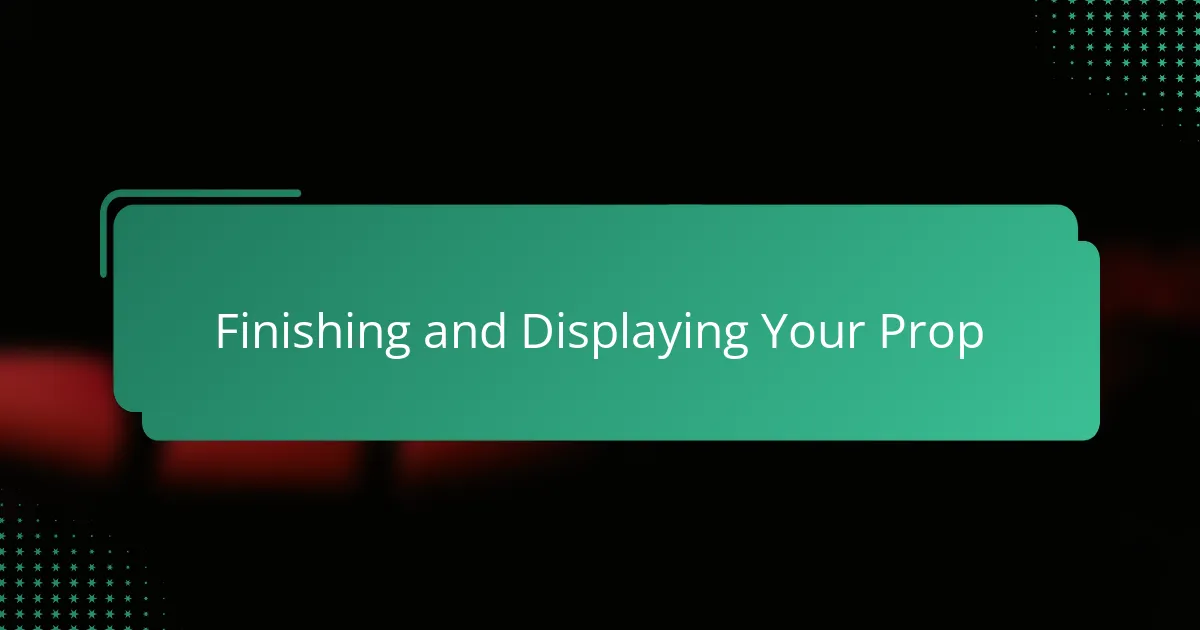
Finishing and Displaying Your Prop
When it came to finishing my Godzilla prop, I realized that sealing the sculpt with a matte varnish not only protected all those painstaking details but also gave the surface a lifelike skin texture. Have you ever handled a piece that felt fragile, only to find a simple finish transformed it into a sturdier, more believable artifact? That moment made me appreciate how critical finishing touches really are.
Displaying the prop was another adventure altogether. I decided on a custom base that mimicked a cracked cityscape, which instantly added context and drama. Seeing Godzilla poised amid miniature ruins made me feel like I’d captured a piece of the story’s essence—proof that presentation can elevate a prop from “just a model” to a storytelling centerpiece.
I also learned that lighting plays a huge role in showcasing the textures and shadows that bring the sculpt to life. Experimenting with different angles, I discovered how subtle highlights on Godzilla’s scales could reveal hidden depths. Have you ever tried spotlighting a creation and found it suddenly felt more dynamic? That interplay between art and environment was an unexpected joy in the final stages of this project.
